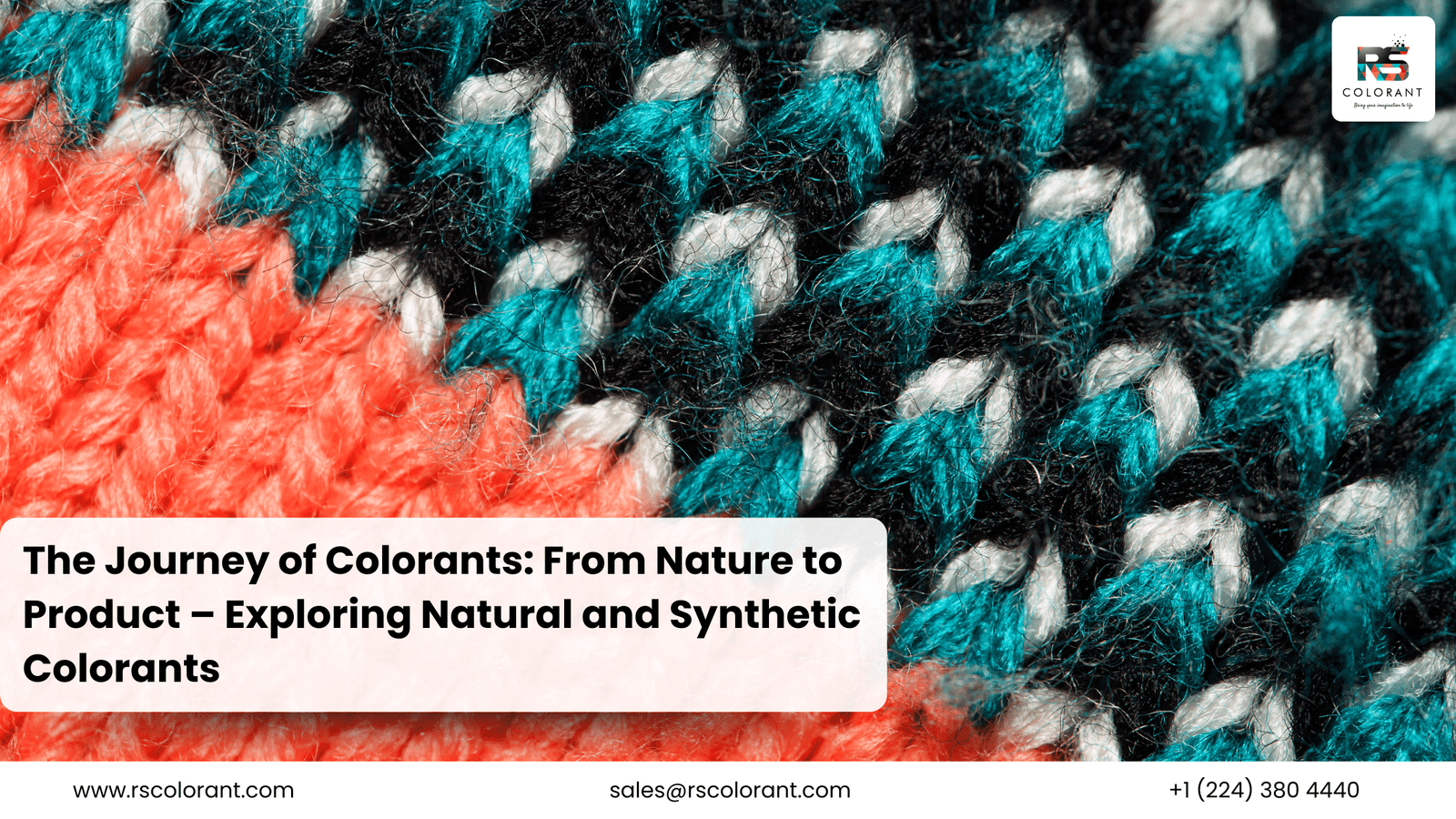Colorants – Introduction
Colorants have always been more than just visual additives; they’re the essence of cultural expression, personal identity, and innovation. From the early days of using crushed berries to the advanced synthetic dyes of today, colorants have had a vibrant journey. Let’s delve into the fascinating history and evolution of these essential compounds.
The Origins of Colorants
Natural Sources of Colorants
Before the era of synthetic dyes, natural sources were the primary means of obtaining colorants. Plants, animals, and minerals provided a rich palette of colors. Indigo, turmeric, and beetroot are classic examples of plant-based sources. Insects like cochineal and minerals such as malachite also played significant roles.
Ancient Uses of Natural Colorants
Ancient civilizations were masters at utilizing natural colorants. Egyptians used henna to dye hair and textiles, while Native Americans used annatto seeds for body paint and fabric dyeing. These natural colorants were not just for aesthetics; they held cultural and spiritual significance.
Plant-Based Colorants
Common Plant Sources
Plants like indigo, saffron, and madder root have been historically significant sources of dyes. Indigofera tinctoria produced a deep blue dye, while saffron, derived from Crocus sativus, provided a rich yellow hue.
Extraction Processes
Extracting color from plants involves various processes. For instance, indigo dye is obtained through fermentation, which converts the plant’s indican into indigotin. Similarly, saffron stigmas are carefully harvested and dried to produce dye.
Applications in Ancient Times
In ancient times, plant-based dyes were used extensively in textile dyeing, art, and cosmetics. The vibrant reds, blues, and yellows adorned everything from royal garments to everyday clothing, highlighting their widespread importance.
Animal-Based Colorants
Historical Use of Animal-Derived Colors
Animal-based colorants have a storied past. One notable example is Tyrian purple, derived from the Murex sea snail. This dye was highly prized in ancient Phoenicia and symbolized royalty due to its labor-intensive extraction process.
Famous Examples (e.g., Tyrian Purple)
Tyrian purple stands out as one of the most famous animal-derived dyes. Its rarity and the complex extraction process made it incredibly valuable. Cochineal, derived from insects, also provided a brilliant red dye used in fabrics and cosmetics.
Ethical Considerations
The use of animal-based colorants raises ethical questions today. With the advent of synthetic alternatives, reliance on animal sources has significantly decreased, aligning with modern views on animal rights and sustainability.
Mineral-Based Colorants
Types of Mineral Colorants
Mineral-based colorants include ochres, malachite, and cinnabar. These minerals were ground into fine powders and used in various applications, from cave paintings to cosmetics.
Historical Significance
Mineral colorants have been found in archaeological sites worldwide, indicating their widespread use. Ochre, for example, was used in prehistoric cave paintings, showcasing the long-standing human fascination with color.
Extraction Methods
The extraction of mineral colorants typically involves mining and grinding the minerals into powders. These powders are then mixed with binders to create paints or directly applied to materials.
Synthetic Colorants: A Modern Revolution
The Birth of Synthetic Dyes
The invention of synthetic dyes in the mid-19th century revolutionized the colorant industry. William Henry Perkin’s accidental discovery of mauveine in 1856 paved the way for an explosion of synthetic dyes.
Advantages over Natural Colorants
Synthetic dyes offered numerous advantages over natural colorants. They provided a broader range of colors, improved color fastness, and were cheaper to produce, leading to their rapid adoption.
Popular Synthetic Colorants
Today, synthetic dyes like azo dyes, anthraquinone dyes, and phthalocyanine dyes dominate the market. These dyes are used in textiles, plastics, and inks, showcasing their versatility.
The Science Behind Colorants
Chemical Composition
Colorants are chemicals that absorb specific wavelengths of light, reflecting the rest, which we perceive as color. Natural and synthetic colorants have distinct chemical structures, influencing their color properties and applications.
How Colorants Work
Colorants work by binding to the material they’re applied to. The interaction between the dye molecules and the material determines the dye’s stability and vibrancy. Innovations continue to enhance these properties for better performance.
Innovations in Colorant Technology
Recent advancements include nanotechnology and biotechnology in colorant production. These innovations aim to create more sustainable, efficient, and diverse colorants for various applications.
Applications of Colorants
In Textiles and Fabrics
Colorants have a significant impact on the textile industry. From the vivid hues of fashion fabrics to the subtle shades of home textiles, dyes are crucial in creating aesthetically pleasing and functional materials.
In Food and Beverages
Natural and synthetic colorants enhance the appeal of food and beverages. Caramel color in colas, annatto in cheese, and synthetic dyes in candies illustrate their widespread use.
In Cosmetics and Personal Care
The cosmetic industry relies heavily on colorants. Lipsticks, eyeshadows, and nail polishes are vibrant and diverse thanks to both natural and synthetic dyes.
In Art and Design
Artists have used colorants for centuries to create masterpieces. From the natural pigments of the Renaissance to the modern synthetic paints, colorants are central to artistic expression.
Environmental Impact of Colorants
Pollution from Synthetic Dyes
The production and disposal of synthetic dyes pose significant environmental challenges. Wastewater from dyeing processes often contains harmful chemicals, leading to pollution.
Sustainable Alternatives
The industry is increasingly turning to sustainable alternatives, such as bio-based dyes and eco-friendly dyeing processes. These innovations aim to reduce the environmental footprint of colorants.
Industry Regulations and Practices
Regulations like REACH in Europe and the Toxic Substances Control Act in the U.S. ensure the safe use of colorants. These regulations help mitigate environmental and health risks associated with colorants.
Health Implications
Safety of Natural vs. Synthetic Colorants
The safety of colorants depends on their chemical composition. While natural colorants are generally considered safer, some can cause allergic reactions. Synthetic dyes are rigorously tested to ensure they meet safety standards.
Common Allergies and Reactions
Colorants, particularly synthetic ones, can cause allergic reactions in some individuals. Common symptoms include skin irritation and respiratory issues, highlighting the need for careful regulation and testing.
Regulations for Safe Use
Governments and regulatory bodies set strict guidelines for the use of colorants in food, cosmetics, and textiles. These regulations ensure that colorants are safe for consumers and the environment.
Trends in the Colorant Industry
Rise of Eco-Friendly Colorants
Eco-friendly colorants are gaining popularity as consumers become more environmentally conscious. These colorants are derived from sustainable sources and produced using environmentally friendly methods.
Technological Advancements
Technological advancements are driving innovation in the colorant industry. From high-performance synthetic dyes to novel natural colorants, the industry is constantly evolving to meet new demands.
Market Dynamics and Consumer Preferences
Consumer preferences are shifting towards sustainable and safe colorants. This shift is influencing market dynamics, with companies investing in research and development to meet these demands.
Case Studies
Successful Use of Natural Colorants in Modern Products
Brands like Aveda and Lush have successfully incorporated natural colorants into their products, appealing to eco-conscious consumers and setting industry trends.
Innovations in Synthetic Dye Production
Companies are developing new synthetic dyes with improved environmental profiles and performance characteristics. Innovations include waterless dyeing technologies and biodegradable dyes.
Future of Colorants
Research and Development
Ongoing research aims to discover new colorants and improve existing ones. Focus areas include sustainability, safety, and performance, ensuring the continued evolution of the colorant industry.
Potential Breakthroughs
Potential breakthroughs include the development of bioengineered dyes, which could revolutionize the industry by providing sustainable and versatile colorants.
Challenges Ahead
Despite advancements, challenges remain. These include environmental concerns, regulatory hurdles, and the need for more sustainable production methods.
Conclusion
The journey of colorants from natural to synthetic forms is a testament to human ingenuity and the desire for vibrant expression. Balancing tradition with innovation, the colorant industry continues to evolve, promising a colorful future.
FAQs
What are the main types of natural colorants?
The main types of natural colorants include plant-based (e.g., indigo, turmeric), animal-based (e.g., cochineal, Tyrian purple), and mineral-based (e.g., ochre, malachite) colorants.
How are synthetic colorants made?
Synthetic colorants are made through chemical synthesis, where specific compounds are combined to create dyes with desired properties. These processes often involve organic chemistry techniques.
Are natural colorants safer than synthetic ones?
Natural colorants are generally considered safer due to their biodegradability and lower toxicity. However, some natural colorants can cause allergic reactions, and not all synthetic dyes are harmful, as they undergo rigorous safety testing.
What are the environmental impacts of colorants?
Synthetic dyes can cause significant environmental pollution, especially in wastewater. However, sustainable alternatives and improved production methods are reducing this impact.
What is the future of the colorant industry?
The future of the colorant industry lies in sustainable, safe, and innovative solutions. Ongoing research and technological advancements promise new colorants that are environmentally friendly and high-performing.




